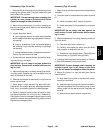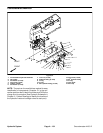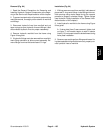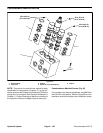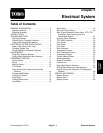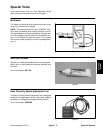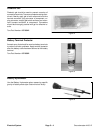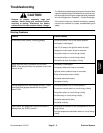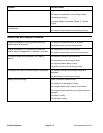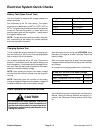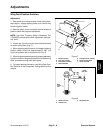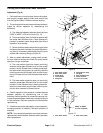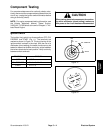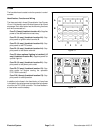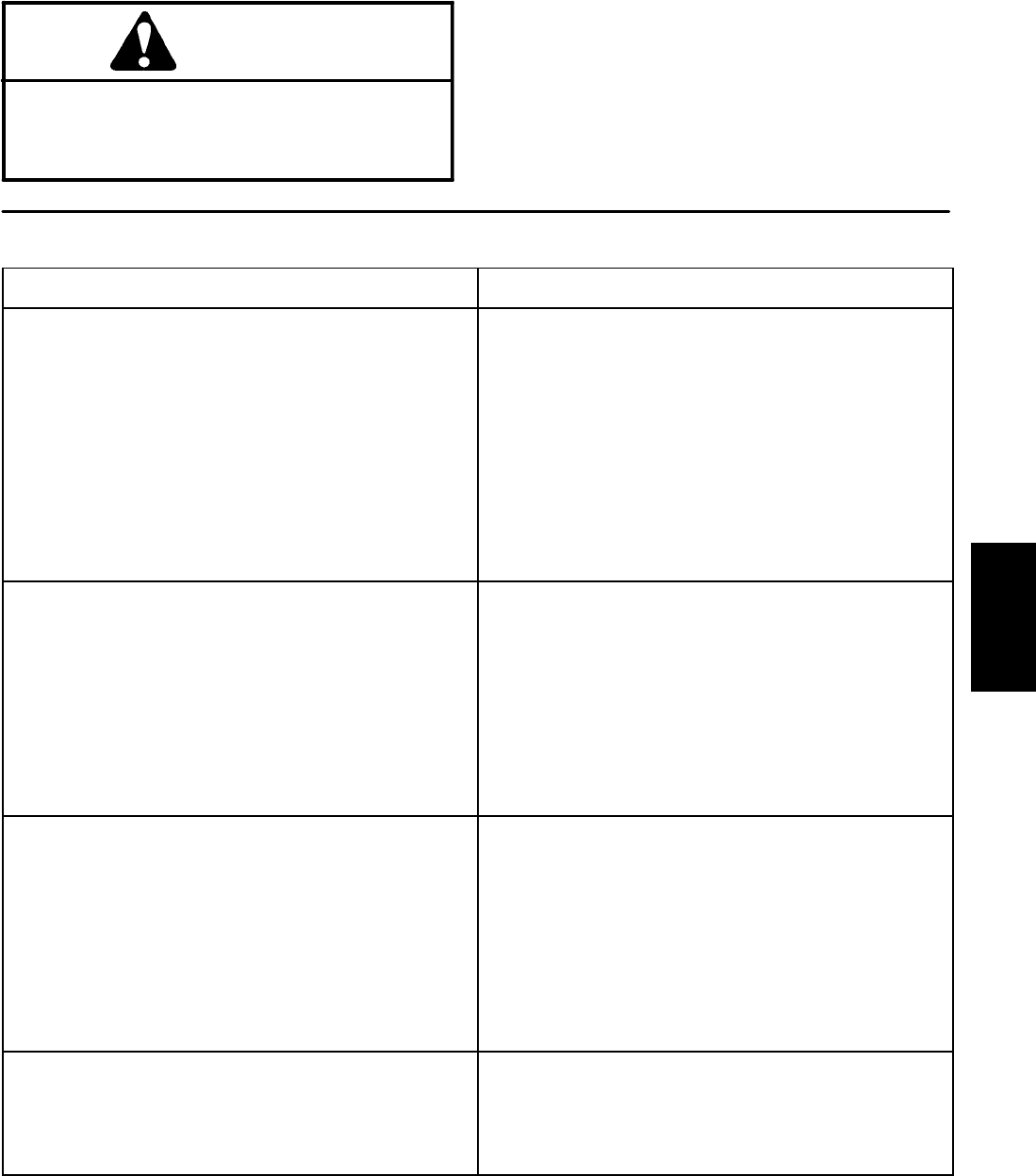
Groundsmaster 4100--D Page 5 -- 5 Electrical System
Troubleshooting
CAUTION
Remove all jewelry, especially rings and
watches, before doing any electrical trouble-
shooting or testing. Disconnect the battery
cables unless the test requires battery voltage.
For effective troubleshooting and repairs, there must be
a good understanding of the electrical circuits and com-
ponents used on this machine (see electrical schematic
and circuit diagrams in Chapter 9 -- Foldout Drawings).
If the machine has any interlock switches by--passed,
connect the switches for proper troubleshooting and
safety.
Starting Problems
Problem Possible Causes
All electrical power is dead, including gauges. The traction pedal is not in the neutral position.
The battery is discharged.
Fuse F2 (10 amp) to the ignition switch is faulty.
A bad ground connection exists on machine.
The ignition switch or circuit wiring is faulty.
The neutral switch or circuit wiring is faulty.
The fusible link from the battery is faulty.
Starter solenoid clicks, but starter will not crank.
NOTE: If the solenoid clicks, the problem is not in the
interlock circuit.
The battery is discharged.
The battery cables are loose or corroded.
A ground wire or cable is loose or corroded.
Wiring at the starter motor is faulty.
The starter solenoid is faulty.
The starter is faulty.
Nothing happens when start attempt is made. Control
panel lights and gauges operate with the ignition
switch in ON.
The traction pedal is not in neutral position.
The traction neutral s witch or circuit wiring is faulty.
The ignition switch or circuit wiring is faulty.
The start relay or circuit wiring is faulty.
The starter solenoid is faulty.
The starter is faulty.
Engine starts, but stops when the ignition switch is
released from the START position.
The engine run solenoid is out of adjustment or circuit
wiring is faulty.
The high temperature shutdown switch or circuit wiring
is faulty.
Electrical
System



